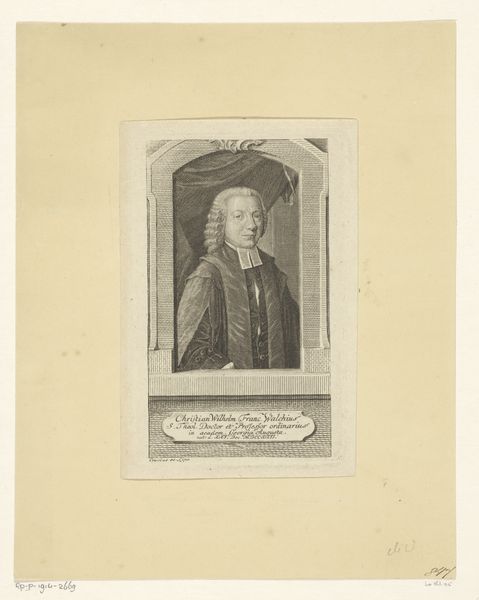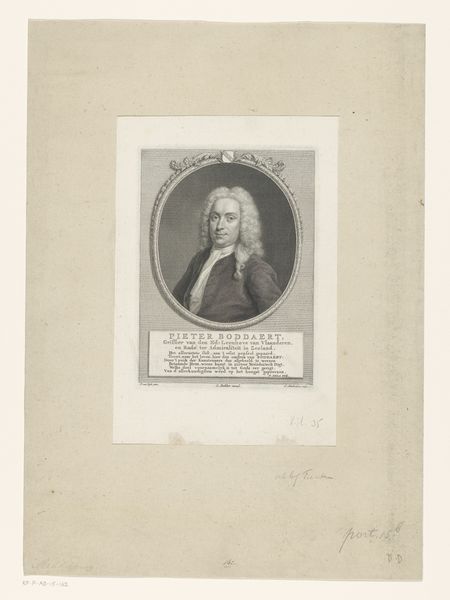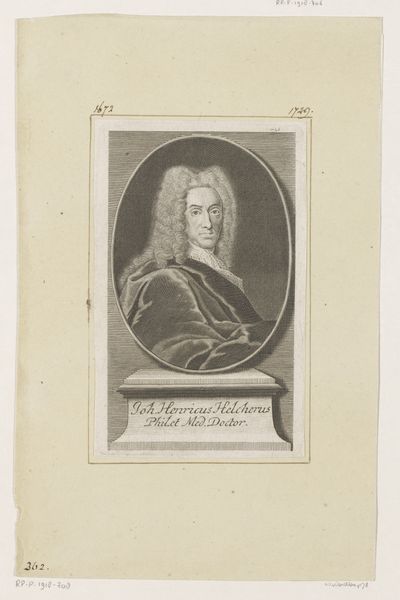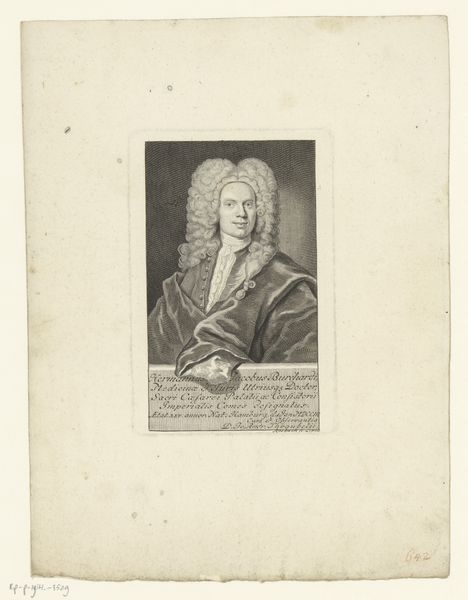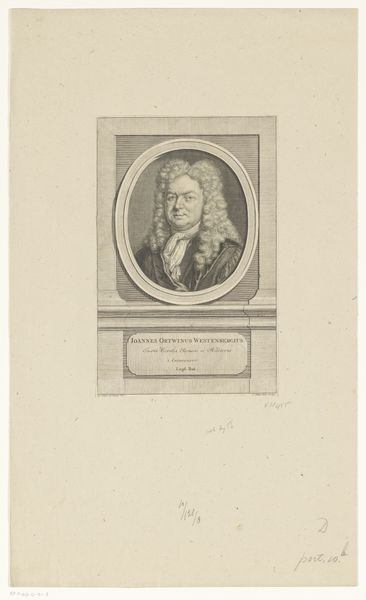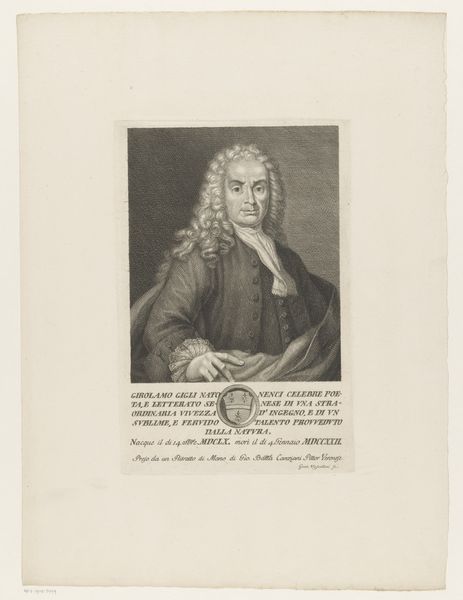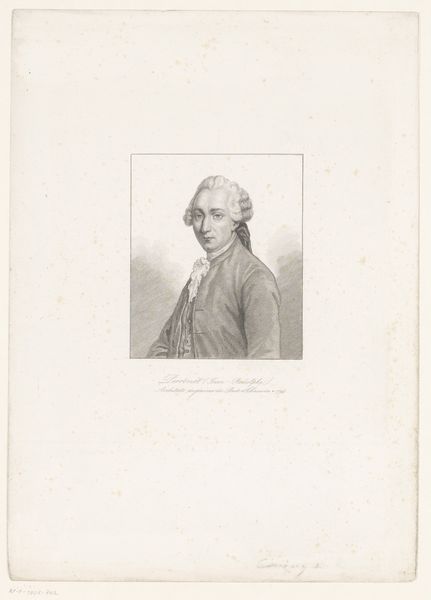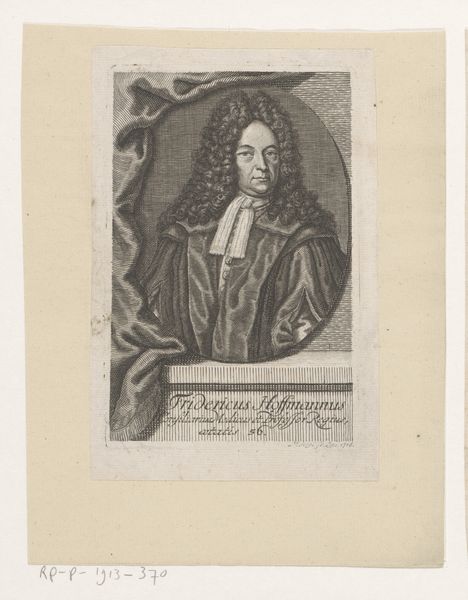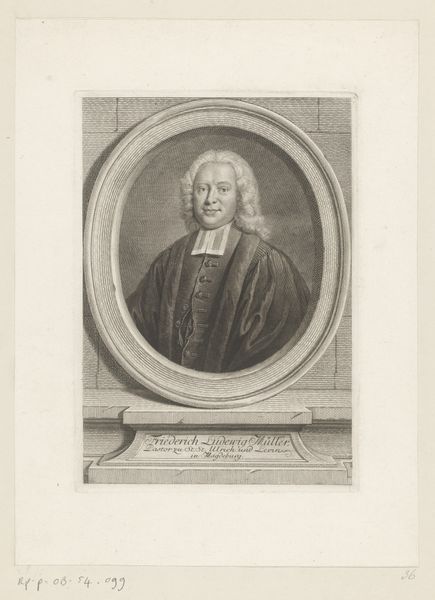
engraving
#
portrait
#
baroque
#
old engraving style
#
pencil drawing
#
academic-art
#
engraving
Dimensions: height 171 mm, width 106 mm
Copyright: Rijks Museum: Open Domain
Curator: Look at this striking engraving by Jacques Nicolas Tardieu, "Portret van Amadeus Lullin," dating back to sometime between 1726 and 1791. Editor: It has a distinctly Baroque feel. Very formal, almost severe in its presentation of the subject. Curator: Yes, the academic style certainly lends it that air. And think about how portraits like these were used—to project power, status. Consider Lullin's attire: the precise collar signifies his role, while the elaborate wig denotes position. Editor: Exactly, it’s crucial to see past the wig and collar. This wasn't just about representing a person, but about reinforcing hierarchies. Amadeus Lullin, likely a figure of power within his community. Curator: Indeed, the portrait’s impact hinges on the symbols recognized at the time. Think of it as an early form of visual branding. Engraving allowed for distribution, spreading this message to a wide audience. Editor: The technique used serves this goal of accessible visual messaging: the fine lines and controlled shading—achieving detail but losing perhaps, some warmth or individuality. Curator: I find there’s an undeniable psychological impact to these pieces, though. They are austere and precise. And in an era where portraits were only available to those of privilege, it’s important to consider the symbolic weight such an image held. Editor: Agreed. And reflecting on the societal power relations embedded within seemingly neutral artistic conventions like portraiture enables us to challenge persisting inequalities that began then. Curator: It gives you pause when contemplating how far portraiture has changed in a social context; how democratized it has become, as compared to who was historically given agency and access to portraiture at that time. Editor: It also underlines how techniques in disseminating image were mobilized toward a desired outcome, much as images serve today. Curator: Absolutely. A powerful glimpse into history that’s worth thinking about, from that Baroque era down to the 21st century. Editor: Very thought-provoking; it inspires considering the continuities—as well as disruptions—between how images conveyed privilege centuries ago and images communicate influence today.
Comments
No comments
Be the first to comment and join the conversation on the ultimate creative platform.
